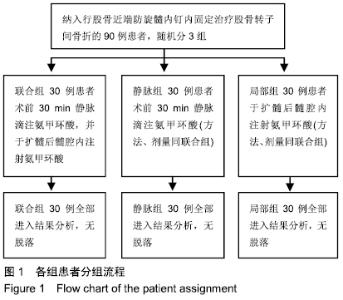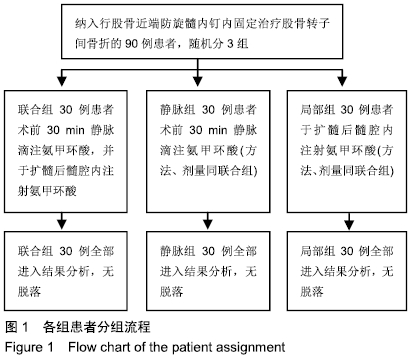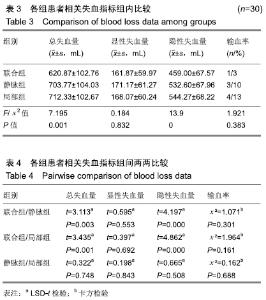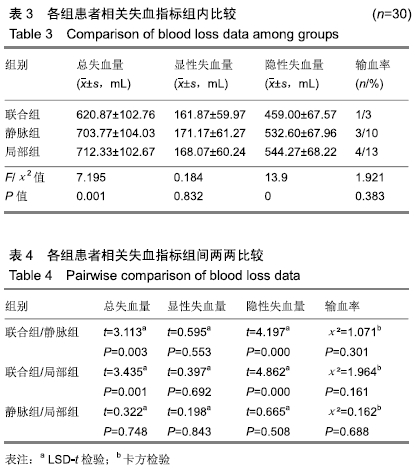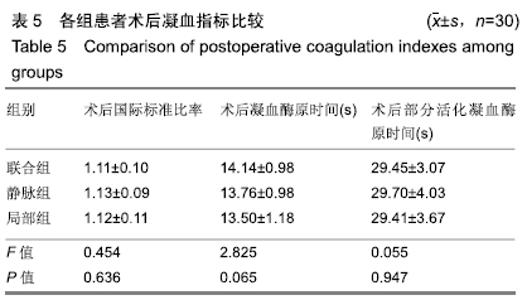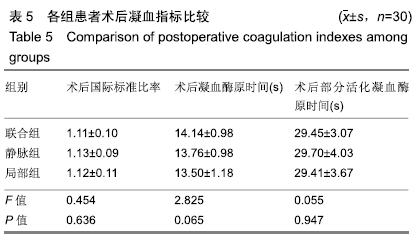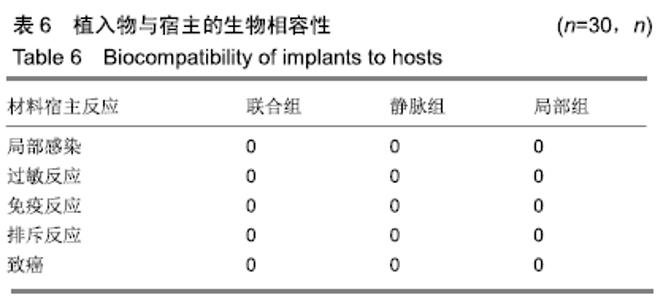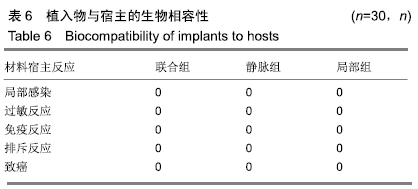[1] 徐驰,周勇,赵军,等.PFNA治疗老年股骨转子间骨折的隐性失血分析[J].中国矫形外科杂志,2018,26(6):510-515.
[2] 金志超,郑晓辉,余翔,等.氨甲环酸降低转子间骨折围术期失血的有效性及安全性[J].中国组织工程研究,2018,22(15): 2361-2366.
[3] 沈鹏远,俞伟.股骨转子间骨折内固定术使用氨甲环酸的有效性和安全性[J].临床骨科杂志,2018,21(4):498-500.
[4] 雷金来,张斌飞,庄岩,等.氨甲环酸减少股骨粗隆间骨折PFNA内固定手术隐性失血的随机对照试验[J].中国骨与关节损伤杂志, 2018,33(12):1244-1246.
[5] 张忠岩,李玉波,王瑜,等.局部应用氨甲环酸对老年不稳定转子间骨折行股骨近端防旋髓内钉围手术期失血量及安全性研究[J].临床药物治疗杂志,2018,16(9):64-67.
[6] NADLER SB, HIDALGO JH, BLOCH T. Prediction of blood volume in normal human adults. Surgery. 1962;51(2): 224-232.
[7] Carulli C, Piacentini F, Paoli T, et al.A comparison of two fixation methods for femoral trochanteric fractures:a new generation intramedullary system vs sliding hip screw.Clin Cases Miner Bone Metab.2017;14(1):40-47.
[8] 张磊,周正明,顾家烨,等.经皮加压钢板与股骨近端防旋髓内钉内固定治疗老年稳定性股骨转子间骨折:术后功能恢复、股骨头旋转及固定钉滑脱的比较[J].中国组织工程研究,2017,21(31): 4995-5000.
[9] ARIRACHAKARAN A, AMPHANSAP T, THANINDRATARN P, et al.Comparative outcome of PFNA, Gamma nails, PCCP, Medoff plate, LISSand dynamic hip screws for fixation in elderly trochanteric fractures:a systematic review and network meta-analysis of randomized controlled trials.Eur J Orthop Surg Traumatol. 2017;27(7):937-952.
[10] 杜军江.PFNA与PFN治疗老年股骨粗隆间骨折的疗效研究[J].临床研究,2019,27(5):106-107.
[11] 史晓鹏,殷震宇,汪志芳,等.PFNA与PFN内固定对老年股骨粗隆间骨折髋关节功能的影响[J].世界最新医学信息文摘,2017, 17(23):31+33.
[12] 曾晶山,蔡贤华,李稳,等.隐性失血量对老年股骨转子间骨折固定后临床疗效影响的分析[J].中国矫形外科杂志,2016,24(2): 106-109.
[13] FOSS NB, KEHLET H. Hidden blood loss after surgery for hip fracture. Bone Joint J. 2006;88(8):1053-1059.
[14] SWAIN D, NIGHTINGALE P, PATEL J. Blood transfusion requirements in femoral neck fracture. Injury. 2000;31(1): 7-10.
[15] YU WG, ZHANG XC, WU RB.The visible and hidden blood loss of Asiaproximal femoral nail anti-rotation and dynamic hip screw in the treatment of intertrochanteric fractures of elderly high risk patients:a retrospective comparative study with a minimum 3 years of follow-up.BMC Musculoskeletal Disord. 2016;17:269.
[16] YU W, ZHANG X, WU R, et al. The visible and hidden blood loss of Asia proximal femoral nail anti-rotation and dynamic hip screw in the treatment of intertrochanteric fractures of elderly high-risk patients:a retrospective comparative study with a minimum 3 years of follow-up. BMC Musculoskelet Disord. 2016;17(1):269-273.
[17] WOLBERG AS, ALEMAN MM, LEIDERMAN K, et al. Procoagulant activity in hemostasis and thrombosis:Virchow's triad revisited. Anesth Analg. 2012;114(2):275-285.
[18] HEIDARI N, JEHAN S, ALAZZAWI S, et al. Mortality and morbidity following hip fractures related to hospital thromboprophylaxis policy. Hip Int. 2012;22(1):13-21.
[19] IRISSON Y, HÉMON V, PAULY S, et al. Tranexamic acid reduces blood loss and financial cost in primary total hip and knee replacement surgery. Orthop Traumatol Surg Res. 2012; 98(5):477-483.
[20] TENGBERG PT, FOSS NB, PALM H, et al. Tranexamic acid reduces blood loss in patients with extracapsular fractures of the hip:results of a randomised controlled trial. Bone Joint J. 2016;98(6):747-753.
[21] BARUAH RK, BORAH PJ. Use of tranexamic acid in dynamic hip screw plate fixation for trochanteric fractures. J Orthop Surgery (Hong Kong). 2016;24(3):379-382.
[22] 李辉,马建兵,陈信林,等.氨甲环酸降低股骨粗隆间骨折PFNA术后失血量的临床研究[J].实用骨科杂志,2016,22(11):973-975.
[23] DRAKOS A, RAOULIS V. Efficacy of local administration of Trannexamic Acid for blood salvage in Patients undergoing intertrochanteric fracture suegery. J ORTHOP TRAUMA. 2016;30(8):409-441.
[24] YANG Y, LV YM, DING PJ, et al. The reduction in blood loss with intra-articular injection of tranexamic acid in unilateral total knee arthroplasty without operative drains:a randomized controlled trial. Eur J Orthop Surg Traumatol.2015;25(1): 135-139.
[25] MANNUCCI PM. Hemostatic drugs. N Engl J Med. 1998; 339(4):245-253.
[26] 张忠岩,李玉波,王瑜,等.不同方式应用氨甲环酸对PFNA治疗老年不稳定股骨转子间骨折围手术期失血量研究[J].创伤外科杂志,2019,21(2):134-137.
[27] BAO N, ZHOU L, CONG Y, et al.Free fatty acids are responsible for the hidden blood loss in total hip and knee arthroplasty.Med Hypotheses. 2013;81(1):104-107.
[28] FOSS NB, KEHLET H. Hidden blood loss after surgery for hip fracture.J Bone Joint Surg Br. 2006;88(8):1053-1059.
[29] 孙博,王静悦,李冀.氨甲环酸静脉与局部联合用药对全膝关节置换患者围术期纤溶活性与失血量的影响[J].河北医学,2019, 25(3):667-671.
[30] 马瑞,杨佩,王春生,等.不同氨甲环酸给药途径在全膝关节置换术的有效性和安全性[J].中华关节外科杂志(电子版),2018,12(5): 666-670.
[31] JAIN NP, NISTHANE PP, SHAH NA. Combined administration of systemic and topical tranexamic acid for total knee arthroplasty:can it be a better regimen and yet safe? A randomized controlled trial. J Arthroplasty. 2016;31(2): 542-547.
[32] 郭永传,娄茜华,马守战,等.关节腔周围注射联合静脉应用氨甲环酸对初次全髋关节置换术后隐性失血的影响[J].河北医科大学学报,2018,39(11):1287-1290+1295.
[33] DUNCAN CM, GILLETTE BP, JACOB AK, et al.Venous thromboembolism and mortality associated with tranexamic acid use during total hip and knee arthroplasty.J Arthroplasty. 2015;30(2):272-276.
|
